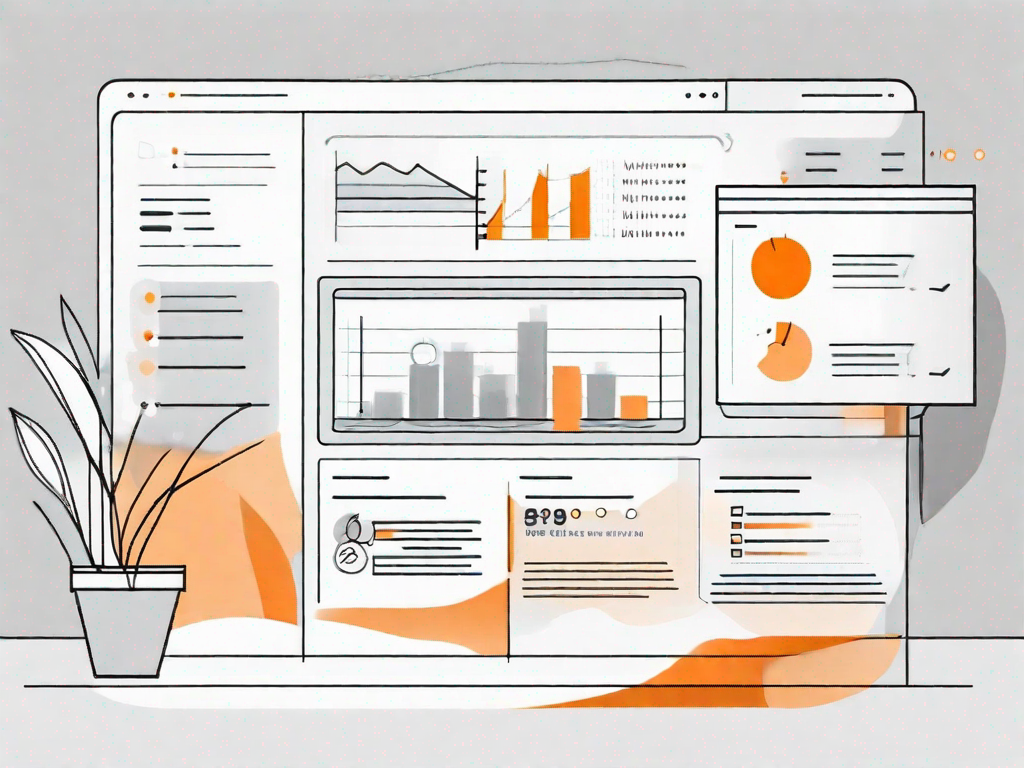.svg)
How to design a call-to-action section in Webflow
.svg)

In today's digital age, designing a captivating call-to-action section for your website has never been more important. A call-to-action (CTA) is a crucial element that prompts your website visitors to take a desired action, whether it's signing up for a newsletter, making a purchase, or filling out a contact form. To ensure that your CTA section stands out and effectively drives conversions, it's essential to pay attention to its design and functionality.
Understanding the Importance of a Call-to-Action Section
Before diving into the nitty-gritty of designing a call-to-action section, let's first grasp the significance it holds within your website strategy. A call-to-action section acts as a direct communication channel with your visitors, guiding them towards your desired conversion goals. It serves as a focal point that captures their attention and directs them towards taking the next step.
Imagine this scenario: you have a beautifully designed website with engaging content, but without a clear call-to-action section, your visitors may feel lost or unsure of what to do next. A call-to-action section bridges that gap, providing a clear pathway for your visitors to follow. It's like having a friendly guide leading them through a maze, showing them the way to achieve their desired outcome.
What is a Call-to-Action Section?
A call-to-action section is a dedicated area on your website that houses an actionable message or button, enticing visitors to engage with your business. It is strategically placed to maximize visibility and effectiveness, typically located above the fold on key landing pages.
Think of a call-to-action section as the star of your website, shining brightly and demanding attention. It's the part that prompts your visitors to take action, whether it's making a purchase, signing up for a newsletter, or downloading a free resource. By strategically placing this section in a prominent position, you ensure that it catches the eye of your visitors and compels them to take the desired action.
In addition to its visual appeal, a well-designed call-to-action section should also be clear and easily clickable. It should leave no room for confusion or ambiguity, making it effortless for your visitors to understand what they need to do next. Whether it's a bold button with a compelling message or a simple form to fill out, the call-to-action section should be designed with the user experience in mind.
Why is a Call-to-Action Important for Your Website?
Having a thoughtfully crafted call-to-action section can greatly impact your website's success. It serves as a catalyst for conversions, helping you achieve your business objectives. Whether your goal is driving sales, capturing leads, or increasing engagement, a powerful call-to-action can guide your visitors towards the desired outcome.
Imagine you have an online store selling handmade jewelry. Without a compelling call-to-action section, your visitors may browse through your beautiful product images, appreciate the craftsmanship, but ultimately leave without making a purchase. However, with a well-designed call-to-action section that showcases a limited-time offer or a discount code, you can entice your visitors to take action, converting them into paying customers.
Furthermore, a call-to-action section can also help you build a loyal customer base. By offering incentives such as exclusive discounts or freebies, you can encourage your visitors to sign up for your newsletter or create an account. This not only allows you to capture valuable leads but also provides you with an opportunity to nurture the relationship and keep your customers engaged in the long run.
By focusing on designing an exceptional call-to-action section, you can significantly boost your website's effectiveness and achieve tangible results. It's not just about having a visually appealing website; it's about guiding your visitors towards taking action and achieving your business goals.
Getting Started with Webflow
Now that we've covered the importance of a call-to-action section, let's explore how to implement it using Webflow, a leading web design and development platform.
An Introduction to Webflow
Webflow is an intuitive and feature-rich platform that empowers designers to create visually stunning websites without any coding knowledge. It provides a user-friendly interface, drag-and-drop functionality, and powerful design tools, making it an ideal choice for building an impactful call-to-action section.
Setting Up Your Webflow Account
Before delving into the design process, let's ensure you have your Webflow account set up. Visit the Webflow website and sign up, create your account, and familiarize yourself with the platform's interface. This will allow you to seamlessly proceed to the next steps of designing your call-to-action section.
Designing Your Call-to-Action Section
Now that we've covered the basics, let's dive into the design elements that will make your call-to-action section visually appealing and irresistible.
Choosing the Right Layout for Your Call-to-Action
When it comes to the layout of your call-to-action section, simplicity and clarity are key. Select a layout that complements the overall design of your website while ensuring that the call-to-action stands out prominently. Consider utilizing whitespace and contrasting colours to draw attention to the important elements within the section.
Selecting the Perfect Colour Scheme
Colour plays a crucial role in evoking emotions and capturing attention. Choose a colour scheme that aligns with your brand identity and is visually appealing. Consider using high-contrast colours for your call-to-action button to make it stand out. Remember, the colour scheme should create a sense of urgency and encourage action without overwhelming the user.
Incorporating Effective Text and Fonts
The text and fonts used within your call-to-action section should be concise, compelling, and easy to read. Craft a clear and concise message that entices your visitors to take action. Experiment with different font styles to find the one that aligns with your brand voice and enhances readability. Remember, the text should convey the value proposition and create a sense of urgency.
Implementing Your Call-to-Action in Webflow
Now that we have the design elements in place, let's explore how to bring your call-to-action section to life using the powerful design tools Webflow offers.
Using Webflow's Design Tools
Webflow provides a range of design tools that empower you to create visually stunning call-to-action sections. From customizable buttons to interactive animations, you can leverage these tools to add depth and interactivity to your design. Experiment with different styles and effects to find the perfect combination that intrigues your visitors and compels them to take action.
Adding Your Call-to-Action to Your Website
Once you are satisfied with your call-to-action section's design, it's time to integrate it into your website. In Webflow, you can easily add your call-to-action section to any desired page using the intuitive drag-and-drop functionality. Ensure that your call-to-action section is prominently placed, above the fold, where visitors can easily find and engage with it.
Testing and Optimising Your Call-to-Action
Designing a remarkable call-to-action section is only the first step. To ensure its effectiveness, it's crucial to continuously test and optimize your call-to-action to achieve maximum conversions.
How to Test Your Call-to-Action's Effectiveness
Utilize web analytics tools to track and analyze the performance of your call-to-action section. Measure metrics such as click-through rates, conversion rates, and bounce rates to gain insights into its effectiveness. Conduct A/B tests to compare different variations of your call-to-action, allowing you to make data-driven decisions to optimize its performance.
Tips for Optimising Your Call-to-Action
Optimizing your call-to-action section involves iterative improvements to maximize its impact. Experiment with different text, colours, and placement to identify what resonates best with your target audience. Simplify your call-to-action to reduce friction and ensure a smooth user experience. Additionally, consider incorporating persuasive copywriting techniques to make your call-to-action more compelling.
By implementing these testing and optimization strategies, you can consistently refine your call-to-action section to achieve higher conversions and drive the desired user actions.
In conclusion, a well-designed call-to-action section is a powerful tool to drive conversions and achieve your website's goals. By understanding the importance of a call-to-action, leveraging Webflow's design capabilities, and continuously testing and optimizing, you can create an impactful call-to-action section that captivates your visitors, propelling your business towards success.
Let's
Let’s discuss how we can bring reinvigorated value and purpose to your brand.







.svg)